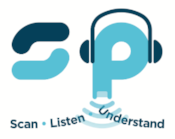The Implications of Home Learning on Mental Health
Are we talking about the impact of home learning on mental health right now? We really should be. As educational professionals, our learning opportunities must be geared towards better supporting SEN learners.
A better understanding of literacy and learning difficulties must take centre-stage as we improve and develop our offers of blended home and school learning. Teachers are in a new pedagogical framework of communicating with learners remotely. They need to be provided with a better insight into how children with literacy difficulties, such as dyslexia, are coping with the stresses of home learning. Without an understanding of literacy difficulties that impact individual learning, well-meaning support may be corrosive, rather than supportive.
Image: Unsplash
We all need a refresher on online safety, and an understanding of how excessive screen time makes children vulnerable. We need to plan how to mitigate for the lack of equitable access to education that is going to shape Generation Z’s futures. From SENCOs to Deputy Head Teachers, we are all on a steep learning curve.
Children with dyslexia and those who have emerging literacy deficits, who have not been formally identified, deserve greater attention as we plan our “new normal” provision offer. It is these learners who are at greatest risk of academic failure. Educational disengagement happening today could be a legacy we are ashamed of for decades to come.
All educational professionals are in agreement that learners need access to high quality assessment for learning and we must create greater equity with well-placed interventions.
What can we do?
1. First thing’s first, we can review the tools and resources that may be locked in cupboards. For example, If you have educational technology tools such as the ReaderPen or ExamReader, this is the time to get them on long-term loan to your learners with weak literacy. By putting reading support into the hands of those who need it, we can close the literacy gap.
If you would like to learn more about the ReaderPen, and access the self-supporting learning resources I have created, visit: https://www.scanningpens.co.uk/Primary-Education-Resources-SPUK/
Providing the ReaderPen and printed resources is a strategy that can help breach the paper and digital divide, giving access where there are no computers or WiFi connection.
2. Launch Zoom or Google hangout reading clubs so students can see other students
and enjoy diving into shared reading together. Put reading, comprehension and speaking at the heart of your support package for students with access to virtual learning.
We are becoming acutely aware of the impending attainment gap that is the inevitable fallout from COVID-19’s emergency education measures. The picture of what is happening right now – in June 2020, is going to look very different soon. The emergency response will not be the long-term offer. What we have provided in an emergency, for many, has come at the expense of quality feedback. This is the time to address this challenge and close the gap.
Just as we are all unique in our reactions to challenge and adversity, the emotional repercussions of dyslexia upon learning is unique and individual.
The emotional impact of dyslexia can be like looking at an abstract painting, you may not be able to see patterns, themes or repeating motifs and finding a narrative can be perplexing.
These are the things to look out for:
Reading avoidance, weak reading and work that is not completed
Lack of accuracy when copying
Time spent learning that seems to have little benefit
Memory and co-ordination difficulties
Dyslexic learners may be dealing with a cocktail of difficulties. Many dyslexic learners mask their difficulties and go under the radar. The emotional cost is not always obvious, and our lack of understanding is part of the problem. Often the internal dialogue that is taking place within the learner is cluttered with negative self-talk, frustration and anxiety. Being unable to grasp the mechanics of a task can lead to symptoms that are in the same range of impact as post-traumatic stress disorder when experienced repeatedly over time.
Learners who are working alone, at home and in a state of frustration need your urgent attention. Virtual support networks for learners who might normally work together needs to be facilitated. For our younger learners, facilitating turn taking – listening and contributing must be our priority in the coming months.
Going forward, blended home and school partnerships are likely to be the foundations of engagement. It will be our action of providing resources and opportunities for parents to develop their knowledge that is the key. The way we support children’s learning now could be the spark needed to bring our learning communities back together.
Thanks for reading.

